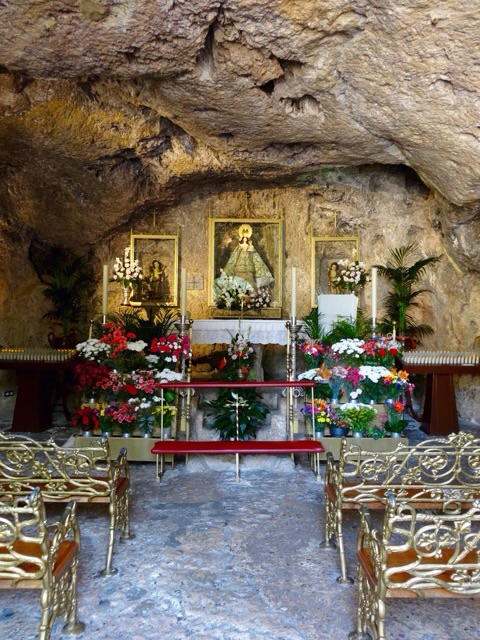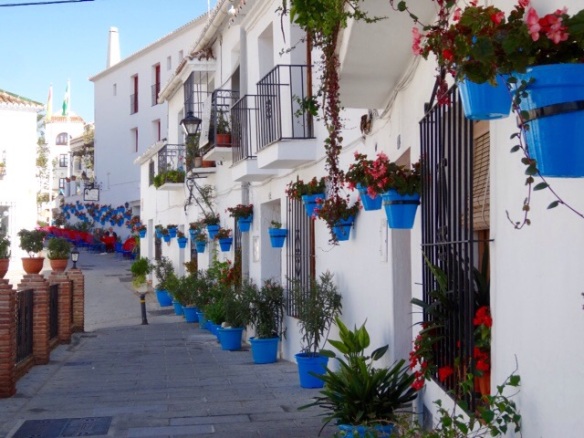Friday, November 20
We caught the local bus into Granada and walked down this wide pedestrian street on our way to the tourist information office. This pedestrian walkway is made with marble paving stones, certainly something we don’t see back home.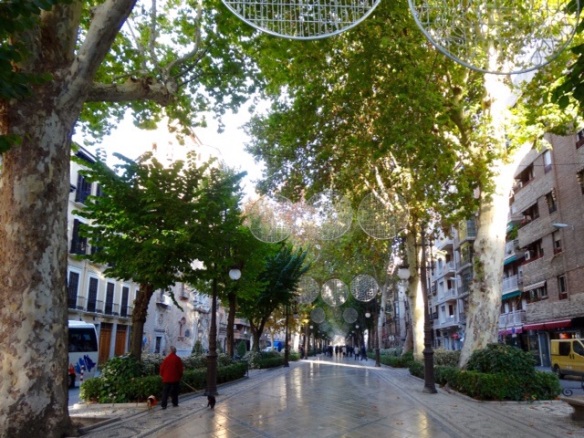 Outside the tourist office is a unique Christmas tree made with begonias.
Outside the tourist office is a unique Christmas tree made with begonias.
There is also a shrine for the victims of the terrorist attacks in Paris. 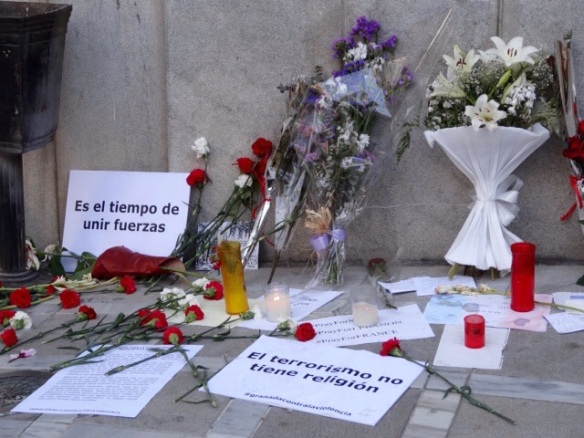 The buildings in Granada are very beautiful, imagine living in an apartment in this magnificent building.
The buildings in Granada are very beautiful, imagine living in an apartment in this magnificent building.
Soon we are on the way to the Alhambra. This was a palace, fortress and medina all rolled into one. We decide to take a bus rather than walk up the hill to its location. This turned out to be a very good decision, as it is a long winding road up to the entrance.
We have a timed entrance ticket into the Nazaries Palaces so we make our way there first. We pass through the modern day medina (shops) and peek into a few on our way. This fellow is making the inlaid wood boxes, table tops and other items that are for sale in his shop. It is very exacting work.
We just have time to visit one of the towers before our visit. This area below the tower has the remains of houses and shops.
The view is spectacular from the top of the tower, but we are surprised at all the smog.
 We are once more reminded of Paris as the flags here are at half mast.
We are once more reminded of Paris as the flags here are at half mast. The Alhambra has a lengthy history and it was first built as a fortress in 889. There is more information here if you are interested. https://en.m.wikipedia.org/wiki/Alhambra
The Alhambra has a lengthy history and it was first built as a fortress in 889. There is more information here if you are interested. https://en.m.wikipedia.org/wiki/Alhambra
The entrance to the palace begins in this room with beautiful coloured tile walls.
 And then we walk through this little keyhole shaped door,
And then we walk through this little keyhole shaped door,  and we are in the incredible courtyard.
and we are in the incredible courtyard. 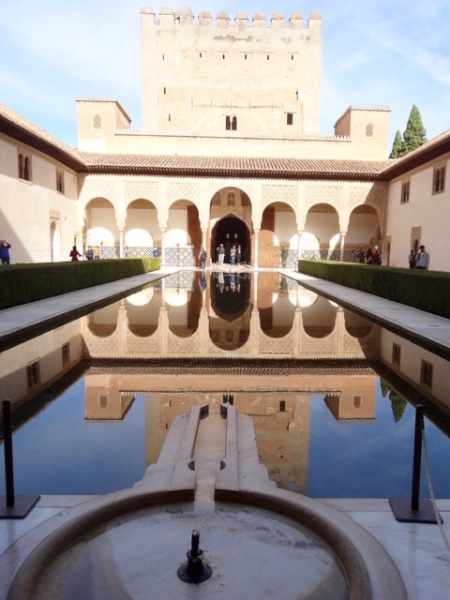 From here we see one amazing sight after another.
From here we see one amazing sight after another.

 I have seen lots of people taking selfies, but this one is definitely the cutest.
I have seen lots of people taking selfies, but this one is definitely the cutest.
The Court of the Lions has the magnificent Fountain of Lions in its center. This is an alabaster basin supported by twelve lions in white marble, which symbolize power, strength and sovereignty. All the buildings are decorated with intricate carvings that were once painted. In some places the paint is still visible.
All the buildings are decorated with intricate carvings that were once painted. In some places the paint is still visible.

Water fountains and pools abound in the Alhambra. We also visit the Generalife which is a villa with beautiful gardens that was a retreat away from the rest of the palace.
We also visit the Generalife which is a villa with beautiful gardens that was a retreat away from the rest of the palace.


Next stop is the Palace of Charles V. The palace was built around this round center court and there is an art gallery in part of the building. There is a small charge fee to go in and we are impressed by the quality of the exhibits and how well organized the gallery is.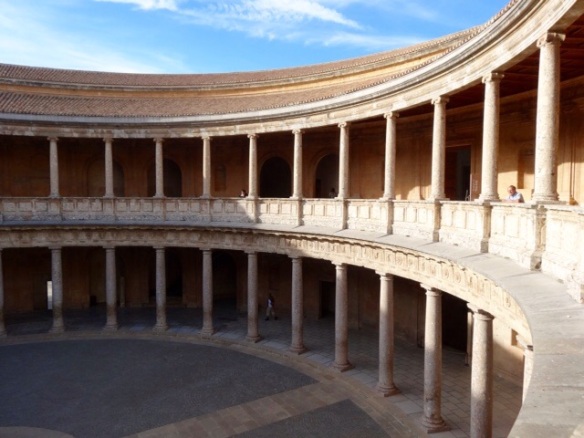

These sculptures were from the 14th century I think. They were larger than life sized and stunningly beautiful. 
There were also some very old books on display. Not sure why they were on the walls on the outside of the Palace of Charles V, but I sure liked these.
Not sure why they were on the walls on the outside of the Palace of Charles V, but I sure liked these.
We spent the whole day at Alhambra and catch the bus back down into town, walking along the ‘river’ as the sun starts to set. Bob is happy we will be taking another bus back to our apartment so he doesn’t have to drive and I don’t have to navigate!






































































